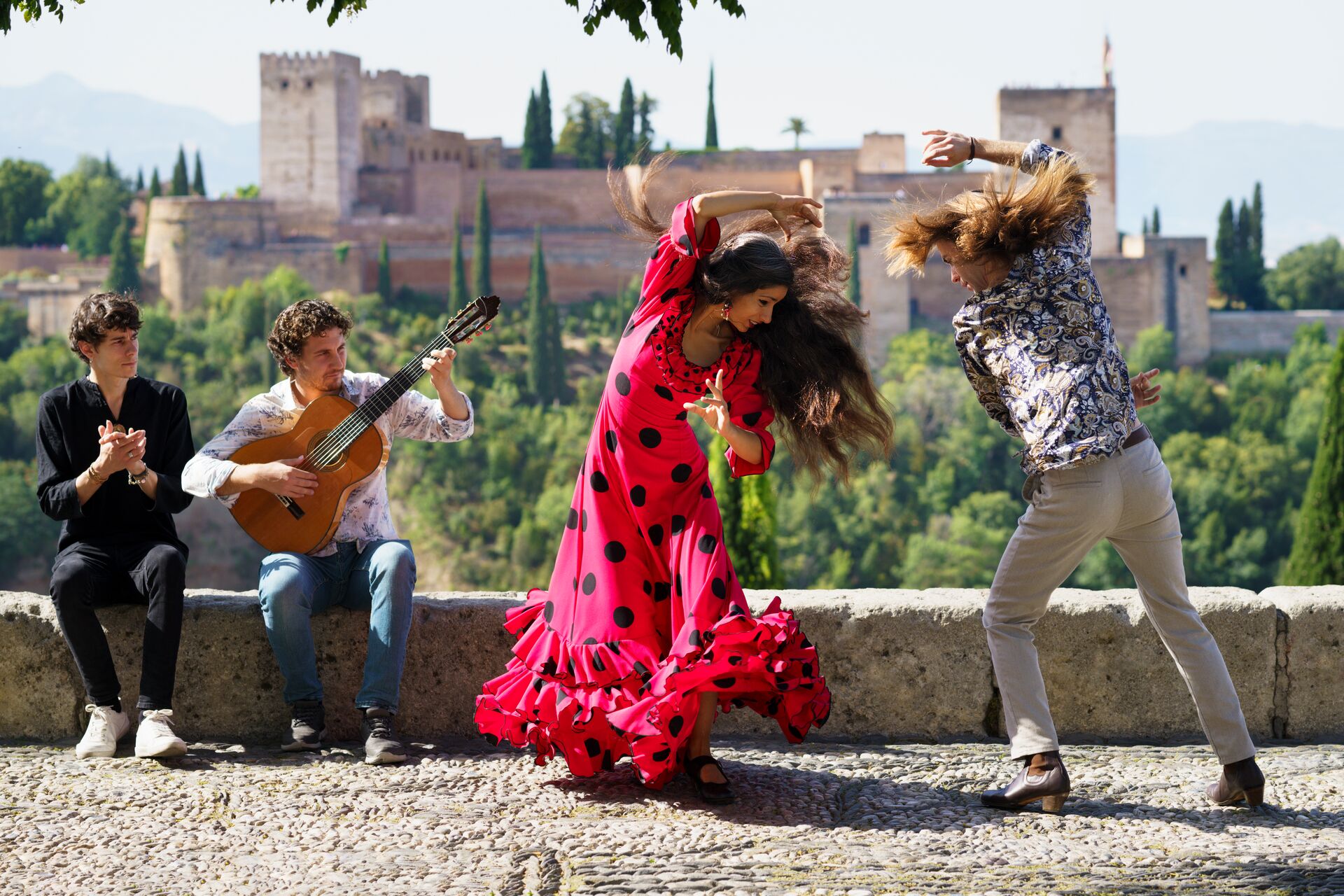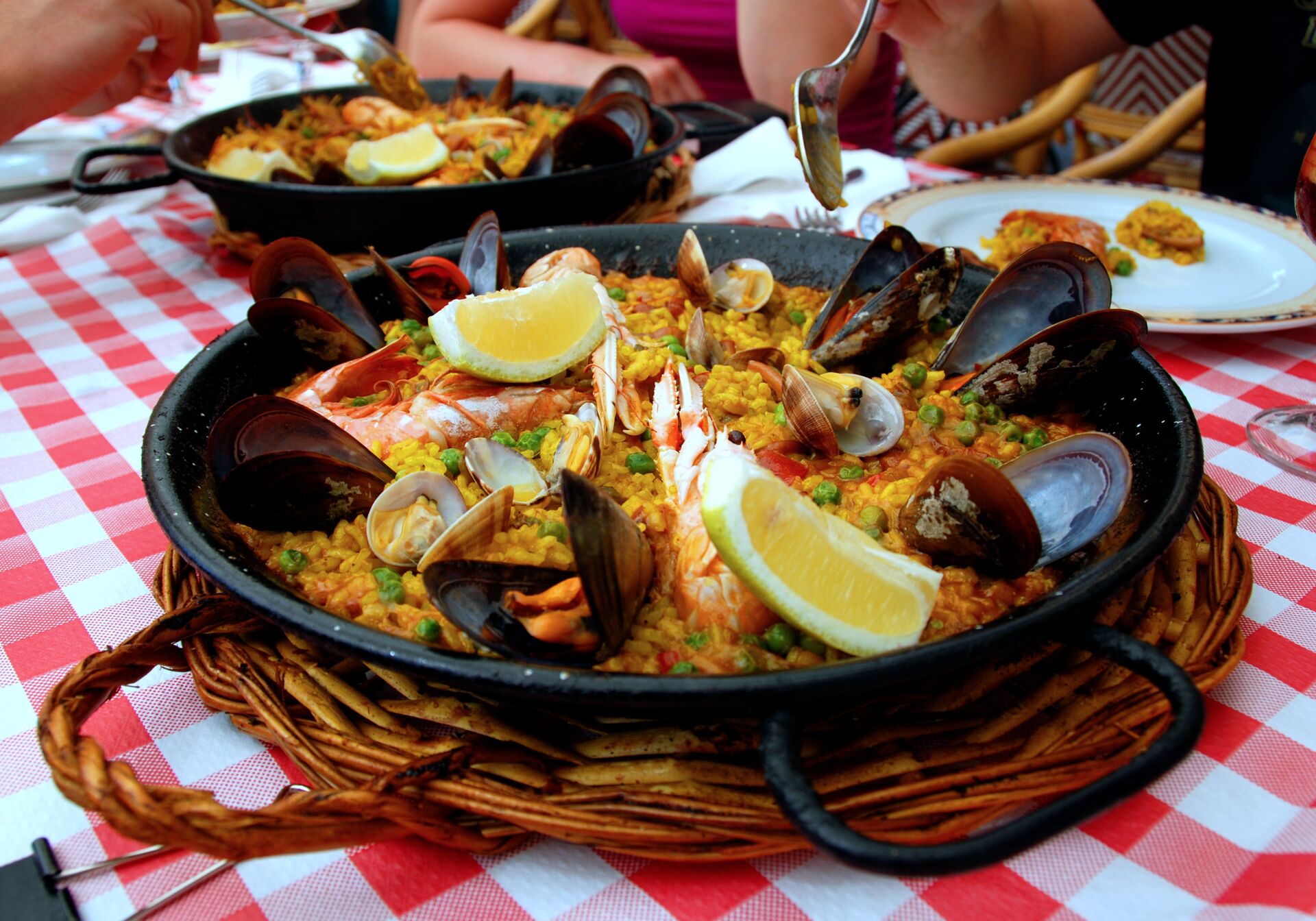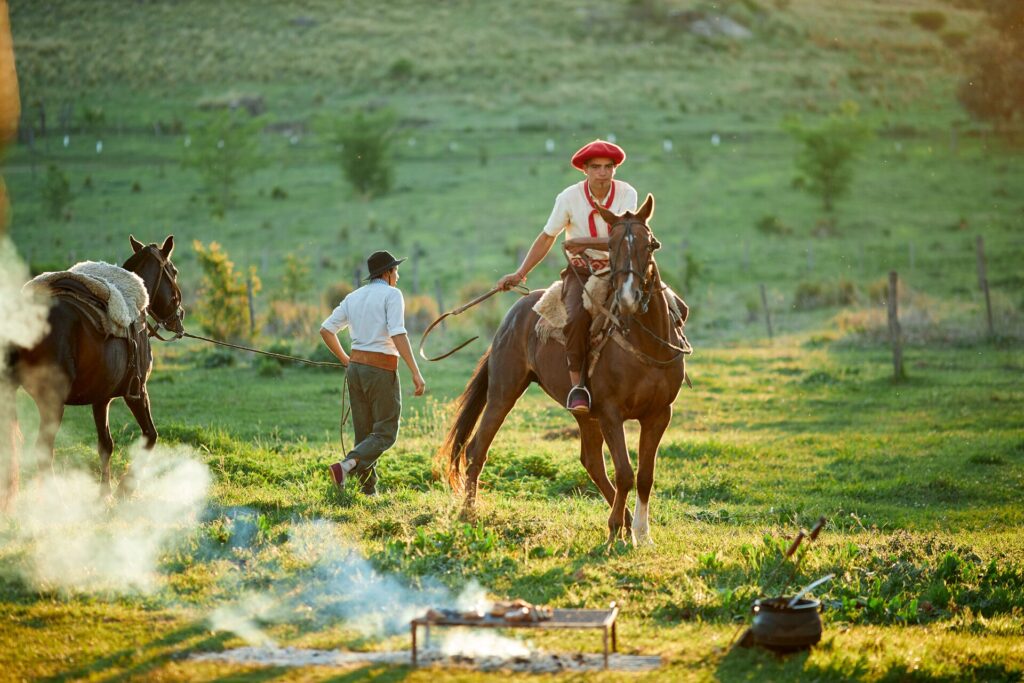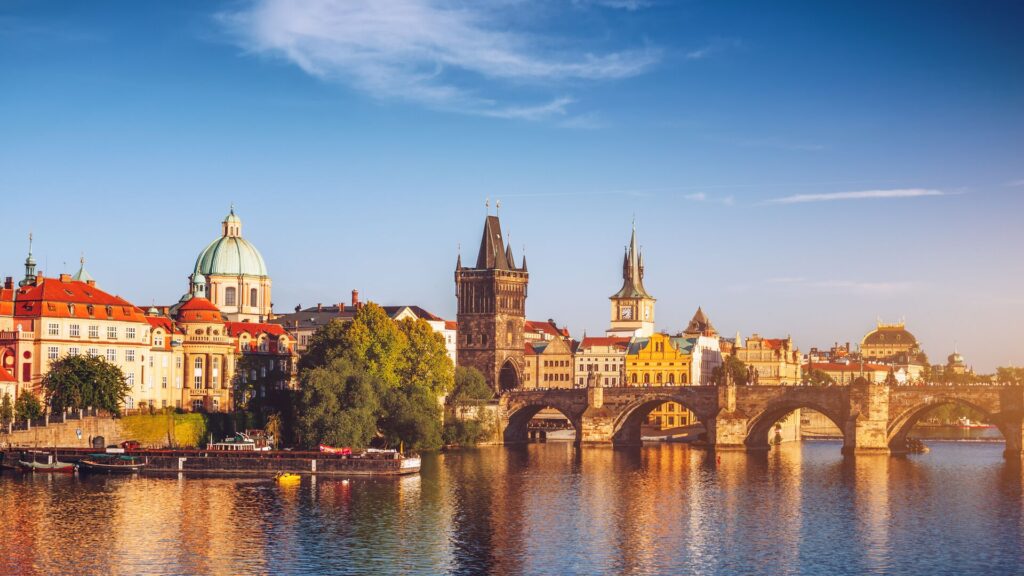Everything You Need to Know About How to Order Food in Spain
25 Common Spanish Phrases You Need to Learn Before Your Next Trip
Spanish; the world’s second most widely spoken language (after Mandarin), is famed for its passion and beauty. In its melodic and speedy delivery, listen out for signs of its Latin root, as well as echoes from Spain’s Moorish conquest, which led to 8% of the Spanish language deriving from Arabic.
Learning a few essential Spanish phrases is bound to make your trip smoother while exploring one of the world’s many Spanish-speaking countries. Speaking the local language, even just a bit, can help you connect with native speakers, navigate new places, and enrich your experience.
Discover fascinating insights on a premium tour of Spain when you book in our September Sale.
Here are 25 common Spanish phrases to know before your next trip.

1. Hola – Hello
Let’s start off and learn Spanish basics, like “Hola”.You can use it in almost any situation, whether you’re meeting someone for the first time or seeing a friend. It’s short, easy to remember, and a great way to start a conversation with native speakers. Don’t pronounce the ‘h’, so it sounds like you’re just saying ‘Oh-lah’.
2. Buenos días – Good morning
The next three Spanish phrases will be greetings at different times of day. Use “buenos días” to greet people in the morning. It literally means “good days” but is used in the same way we use “good morning” in English. You’ll find this phrase helpful when greeting hotel staff, waiters, or people on the street early in the day.
3. Buenas tardes – Good afternoon
This greeting is used from midday until the evening. “Buenas tardes” is a polite greeting you can use when entering a shop, a restaurant, or greeting someone in a professional setting during the afternoon hours.
4. Buenas noches – Good evening/Good night
“Buenas noches” can be used in a couple of ways. You can use it to greet someone in the evening, or to say “good night” when you’re leaving or going to bed.
5. ¿Cómo está? – How are you?
“¿Cómo está?” is the formal way to ask “how are you?” in Spanish. It’s a polite and friendly way to check on someone’s well-being, and it’s one of many excellent Spanish phrases to know when meeting new people or engaging in conversation with someone you don’t know well. Add an ‘s’ on the end (¿Cómo estás?) if you want to make it informal.
6. Bien, gracias. ¿Y tú? – Fine, thank you. And you?
This is a common response to “¿cómo está?” It’s polite and shows interest in the other person’s well-being. If you’re looking to make a good impression or build rapport, this one is essential. The ‘y’ is just like how we would say ‘Ee’, like in “Eel”.
7. Por favor – Please
“Por favor” is one of the most crucial Spanish phrases for any tourist. You are unfamiliar to your host country, you don’t speak the language, and you’re foreign to its local culture. It’s essential to show politeness and graciousness, so we advocate for using “Por favor” liberally.
8. Gracias – Thank you
“Gracias” is the word for thank you. It’s pretty easy to remember if you think of it as relation to the word ‘gratitude’. It’s universally appreciated and is a must-know phrase for any traveler. Use it whenever someone helps you, provides a service, or when you simply want to be polite.
9. De nada – You’re welcome
After someone thanks you, reply with “de nada”, which literally means ‘it’s nothing’. It’s the equivalent of saying “you’re welcome.”
10. Perdón – Excuse me / I’m sorry
“Perdón” is versatile. Use it to get someone’s attention, like when you’re trying to pass by or to apologize for a minor mistake, such as accidentally bumping into someone.
Save up to $3,000* per couple on your first Premium Tour
Plus receive latest offers, travel inspiration, and discover how your travels will make a positive impact. Together, WE MAKE TRAVEL MATTER®. Subscribe Now11. ¿Dónde estás…? – Where is…?
Dónde is one of the most useful Spanish question words, particularly for lost tourists looking for directions. Combine it with other words to ask for specific locations, like “¿dónde está el baño?” meaning “where is the bathroom?”
12. ¿Cuánto cuesta? – How much does it cost?
Out of these Spanish phrases, you’ll definitely want to remember this one for when you’re doing holiday shopping – that is, if you want to see what the price of everything is.
13. No entiendo – I don’t understand
If you’re struggling with the language or can’t grasp what a native speaker is saying, “no entiendo” lets them know you don’t understand and might need them to slow down or explain in a different way.
14. Habla más despacio, por favor – Speak more slowly, please
If someone is speaking too quickly, this phrase politely asks them to slow down. It’s particularly helpful if you’re still getting comfortable with understanding spoken Spanish.
15. ¿Dónde estás? – Where are you?
Using the useful “Dónde” Spanish term mentioned earlier, this is a handy phrase when trying to locate someone to meet.
16. Mi nombre es… – My name is…
When introducing yourself, use “mi nombre es…” followed by your name. This is a straightforward way to start a conversation or introduce yourself in a formal setting.
17. Mucho gusto – Nice to meet you
“Mucho gusto” is a polite way to express that you’re pleased to meet someone. Literally meaning ‘lots of pleasure’, it’s often used after an introduction and helps in making a good first impression.
18. Nos vemos – See you later
Speak like a local by using Spanish phrases which sound casual and relaxed, like “nos vemos”, meaning “we’ll see each other”. This is a casual way to say goodbye, implying that you’ll see each other again soon.
19. Hasta luego – See you later/Goodbye
Similar to “nos vemos,” “hasta luego” is another way to say “goodbye.” It’s commonly used among friends or acquaintances and suggests you’ll see them again soon.

20. ¿Qué hora es? – What time is it?
Don’t miss out on that important tour, your dinner reservation, or your cooking class appointment with one of the most important Spanish phrases: “¿qué hora es?” – “What time is it?”
21. Sí / No – Yes / No
Basic, but essential. “Sí” means “yes,” and “no” is “no.”
22. Me gusta – I like
Tell the waiter at your Spanish restaurant that you liked the pollo by learning essential Spanish phrases like “Me gusta”. For example, “me gusta la comida” means “I like the food.” You can also ask “¿qué te gusta?” to learn about what someone else likes.
23. Estoy perdido/a – I’m lost
If you find yourself lost, “estoy perdido” (if you are male) or “estoy perdida” (if you are female) is crucial. It can help you communicate with locals and get directions back to your destination.
24. ¿Qué significa…? – What does … mean?
If you’re serious about improving your language skills, Spanish phrases like this are crucial. Use it when you encounter a word or phrase you don’t understand. For example, “¿qué significa esta palabra?” means “what does this word mean?”
25. ¡Qué gracioso! – How funny!
If you hear a funny Spanish phrases or jokes, or notice something interesting while you’re out and about, respond with “¡qué gracioso!” It’s a great way to engage in light-hearted conversation and gets you sounding just that little bit more natural.

Learning these common Spanish phrases will greatly enhance your travel experience to any Spanish-speaking country. You’ll find it easier to communicate with locals, get around, and fully immerse yourself in the culture. Even a small effort to learn Spanish and speak the local language shows respect and interest in the local culture, which can lead to more meaningful interactions and experiences. Start practicing these essential Spanish phrases today, and get ready to impress the locals on your next adventure.
Practice your newly-learned phrases with a trip Spain – book now in our September Sale.
LIKED THIS POST? SHARE WITH YOUR COMMUNITY





